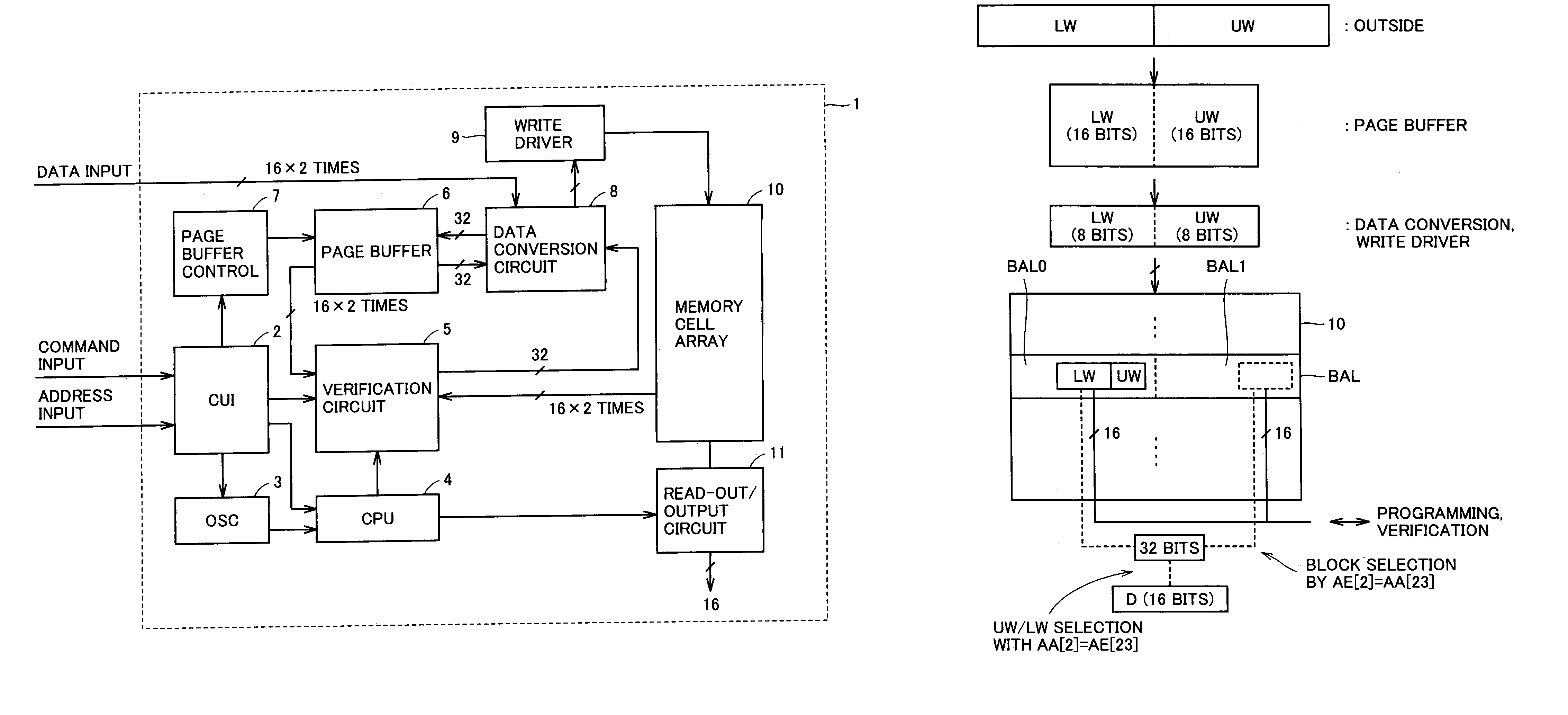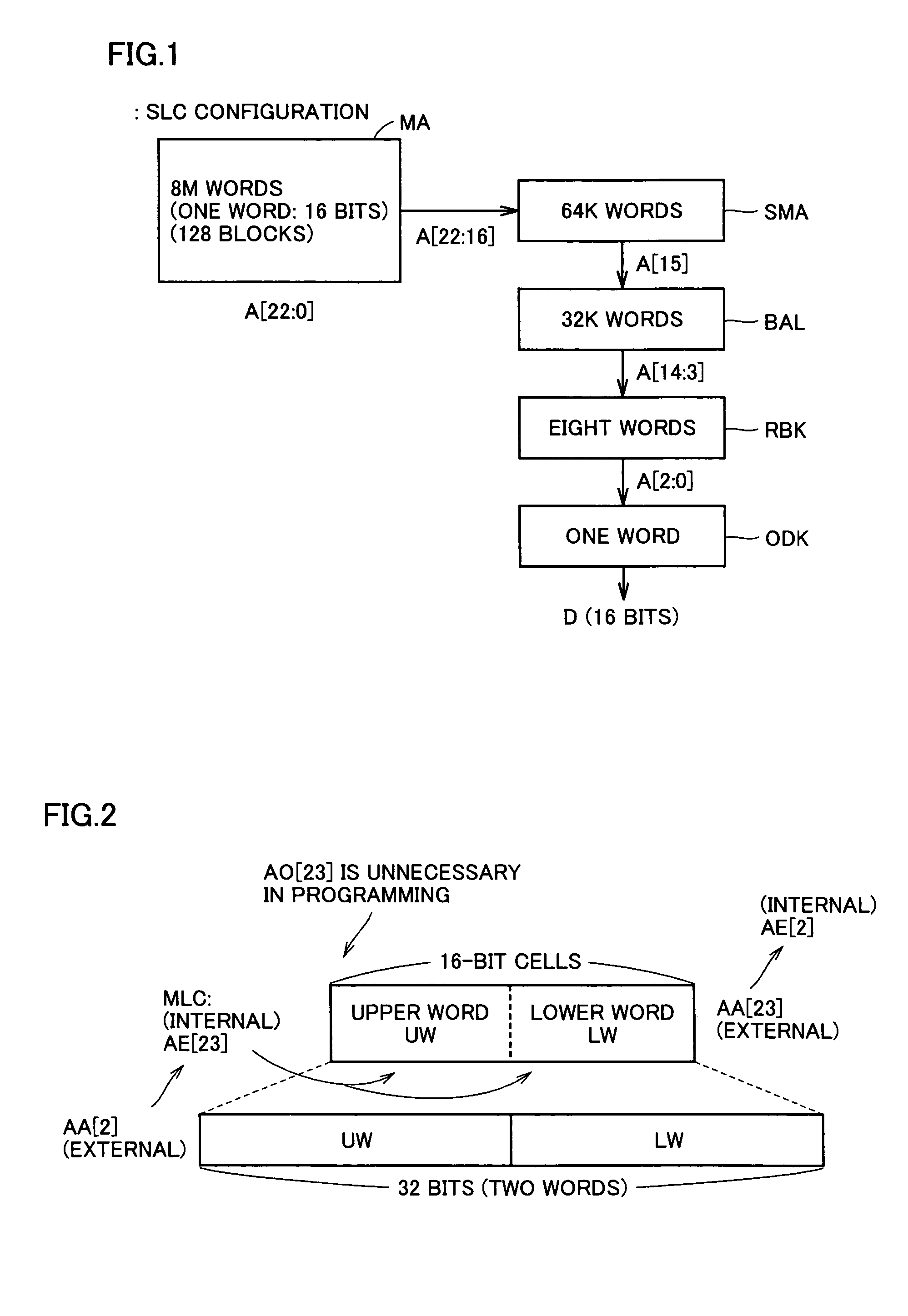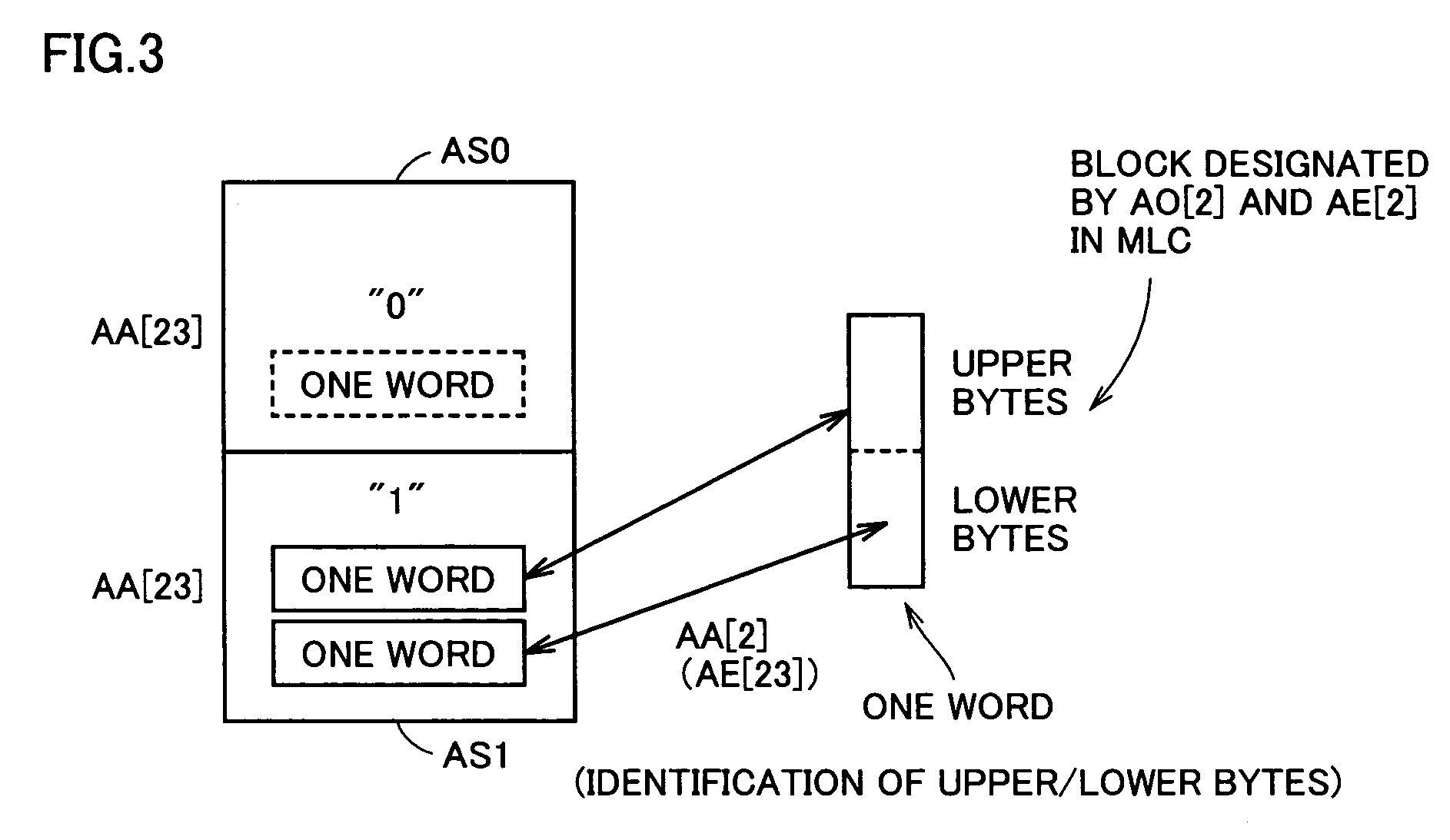Multi-level nonvolatile semiconductor memory device utilizing a nonvolatile semiconductor memory device for storing binary data
a nonvolatile semiconductor and memory device technology, applied in the field of semiconductor memory devices, can solve the problems of not taking into account the configuration for stably generating the basis voltage for the comparison, the difficulty of coexisting slc configuration and mlc configurations that are different in number of addresses, and the long period of time required for data read-out, etc., to achieve high speed
- Summary
- Abstract
- Description
- Claims
- Application Information
AI Technical Summary
Benefits of technology
Problems solved by technology
Method used
Image
Examples
first embodiment
[0097]FIG. 1 is a diagram schematically showing the configuration of a memory array and the configuration of an address of a memory cell of a semiconductor memory device to which the present invention is applied. In FIG. 1, a memory array MA has memory cells of 8M words×16 bits. Here, 1 word is formed of 16 bits.
[0098]In memory array MA, 128 blocks of 64K words are provided. Accordingly, an address A [22:0] of 23 bits is used for selecting 1 word from these 8M words. Memory array MA is typically divided into two memory mats. Address bits A [22:16] are used for selecting a block SMA of 64K words. 64K word block SMA includes two 32K word blocks BAL. The 32K word block BAL is typically used as a sector and utilized as an erasure unit of data.
[0099]A read out data block RBK of 8 words is selected from 32K word block BAL in data reading out. Address bits A [14:3] are utilized for selecting the 8 words from 32K word block BAL. Address bits A [2:0] are utilized for finally selecting a read...
PUM
 Login to View More
Login to View More Abstract
Description
Claims
Application Information
 Login to View More
Login to View More - R&D
- Intellectual Property
- Life Sciences
- Materials
- Tech Scout
- Unparalleled Data Quality
- Higher Quality Content
- 60% Fewer Hallucinations
Browse by: Latest US Patents, China's latest patents, Technical Efficacy Thesaurus, Application Domain, Technology Topic, Popular Technical Reports.
© 2025 PatSnap. All rights reserved.Legal|Privacy policy|Modern Slavery Act Transparency Statement|Sitemap|About US| Contact US: help@patsnap.com



